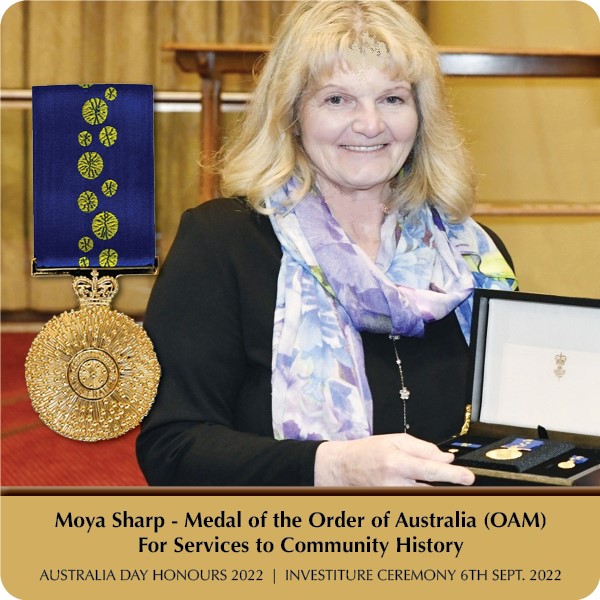- Aboriginal History
- Cemeteries
- Hospitals
- Hotels
- Maps of the Goldfields
- Military
- Miners
- Miscellaneous
- People
- Places on the Goldfields
- Place Index A-Z
This website is dedicated to the memory of my two dear friends Sandy Duncan and Shyama Peebles who both passed away in 2012.
Kanowna > WW1 Soldiers - Kanowna
WW1 Soldiers
For further details go to - https://www.awm.gov.au/
Enlisted or Born in Kanowna
Barclay James Billington : Place of Birth Kanowna WA ; Place of Enlistment Brisbane QLD ;
Next of Kin; Mother - Barclay Agnes
Barrett Thomas Frederick : Place of Birth Kanowna WA ; Place of Enlistment Blackboy Hill WA ;
Next of Kin; Father - Barrett James
Brown Warren Harward : Place of Birth Kanowna WA ; Place of Enlistment Perth WA ;
Next of Kin; Mother - Lovergrove Mary
Caldwell James : Place of Birth Kanowna WA ; Place of Enlistment Perth WA ;
Next of Kin; Father - Caldwell James Jonas
Caldwell John : Place of Birth Kanowna WA ; Place of Enlistment Perth WA ;
Next of Kin; Mother - Caldwell Charlotte
Creed Earl Timothy : Place of Birth Kanowna WA ; Place of Enlistment Perth WA ;
Next of Kin; Father - Creed Timothy
Haack William Henry : Place of Birth Kanowna WA ; Place of Enlistment Narrogin WA ;
Next of Kin; Father - Haack James
Hawkins John Michael [Morgan John Haigh] : Place of Birth Kanowna WA ; Place of Enlistment Perth WA ;
Next of Kin; Father - Hawkins Albert
Heenan Eric Michael : Place of Birth Kanowna WA ; Place of Enlistment Perth WA ;
Next of Kin; Father - Heenan Michael Joseph
Taylor George Charles : Place of Birth Kanowna WA ; Place of Enlistment Blackboy Hill WA ;
Next of Kin; Father - Taylor George
Researched by Dave Spain:-
1872 PTE James Bellington Johnstone Barclay was born in Kanowna on 29th July 1899. His Mother was Agnes Barclay and lived in Baroona Rd, Rosalie, Brisbane. PTE JBJ Barclay had a fair complexion with grey eyes and auburn hair. His religion was Presbyterian. He was single. He joined the 1st Australian Imperial Force on the 9th February 1916 at Brisbane, QLD, and was allocated to the 3rd Reinforcements of the 49th Infantry Battalion.
PTE Barclay embarked from Pinkenba, Queensland, on the 1st May 1916. He was on the HMAT D6. This may have been the SS Mendi which sank after a collision in 1917. He arrived in Alexandria on the 13th June 1916. He then was granted leave and after that leave, embarked for England on the 8th September 1916 on the SS Megantic and was billeted in Larkhill. He was at Larkhill in August 1916. During this time, he completed his training and was transferred.
He was allocated to the 41st Infantry Battalion. He proceeded overseas to France with the 41st Battalion via Southampton on the 24th November 1916. He participated in several battles with the 41st Battalion during the months of December 1916 to the month of September 1917. He contracted severe Trench Fever (caused by body lice) in December 1917. He was repatriated to hospital on the 27th December 1917 and then embarked to England on the Hospital Ship, St David, for Edmonton, England. On the 24th April 1918 he was returned to Australia as medically unfit and discharged on the 7th June 1918. He returned to Australia on the HMAT A29 (SS Suevic).
He was entitled to the British War Medal and the Victory Medal. He was also granted a wounded badge. He married Minnie Maud Barclay on the 11th October 1927 in Sydney and they had a son. Pte James Bellington Johnstone Barclay passed away on the 29th December 1957.
World War Two Service
NX 96458 Pte James Barclay enlisted into the Volunteer Defence Organisation (VDO) and was allocated to the 16th Garrison Battalion located in Hay, NSW, Number 6 Camp, on the 29th May 1942 until the 5th May 1944. He did not serve in any operational area overseas.
He is entitled to wear the following badges and medals. They have all been claimed.
|
|
The Wounded/Sick Badge - The British War Medal, The Victory Medal - The Australian Service Medal 1939/45
PTE Thomas Barrett initially enlisted on the 27th September 1916. His Father’s name was James Barrett and lived in Leonora, Western Australia. He was born on the 30th November 1899 at Kanowna. He was 5ft 5 in tall (165cm). His Mother’s name was Mary. He had tried to enlist at the age of 16 in 1916. He was discharged when he arrived at Blackboy Camp in 1916. He again tried to enlist with his parents’ permission in 1918 but due to war hostilities due to cease and him being still underage, he was declined.
He did not participate in war service overseas.
32539 Pte Warren Harwood Brown enlisted in the AIF on the 20th September 1916 and was born on or about the 20th July 1897 at Kanowna, Western Australia. His Mother was Mary Lovegrove and his Father was Dr George Harwood Lovegrove and they resided in Mundaring, West Australia. He was 5ft 9 half inches tall (175 cm) and weighted 125lbs (57kg) and was of a fresh complexion with blue eyes and dark brown hair. His religion was Church of England. He was single.
At the time of his enlistment he was in Melbourne and was a University student. He enlisted into the 89th Depot. He completed his training as an Artillery reinforcement and was allocated to the Field Artillery Brigade, 10th Reinforcements as a Driver on the 5th January 1917. GNR WH Brown embarked from Sydney on the HMAT Osterley for Plymouth on the 10th February 1917 and arrived on the 11th April 1917. He had been designated a Driver (Lance Bombardier). He was with the Royal Brigade Australian Artillery until he proceeded overseas with the 10th Reinforcements of the 24th Field Australian Artillery. He arrived in France on the 15th August 1917 and was transferred to the 8th Australian Field Artillery Brigade on the 4th September 1917. Shortly after he was transferred to the 3rd Divisional Artillery Corps. On the 29th November 1917 LBDR Brown was transferred from the 3rd Divisional Australian Corps back to the 8th Australian Field Artillery Brigade and he requested to be reverted to the rank of Gunner. This was granted on the 4th January 1918.
It appears, he returned to Western Australia to enlist and revealed he had been with the Melbourne University Rifles Regiment for three months before enlisting. However, his mother grants permission for him to proceed with his enlistment to Artillery in Western Australia. He was still sent back to Maribyrnong, Victoria, for his embarkation to France.
32539 GNR Warren Harwood Brown participated in the Second Battle of Picardy (Battle of the Somme 1918) it was called Operation Michael and he died of wounds, received in action on the 20th April 1918. He was attended to by 10th Field Ambulance. Before he died he was transferred to 11th Field Ambulance. He had gunshot wounds(GSW) to his chest and abdomen. He is buried in Mericourt L’Abbe Communal Cemetery. The Commonwealth War Graves Commission attends to his grave. He was 19 years of age.
His Parents claimed his medals.
The British War Medal, The Victory Medal. The Memorial Scroll. The WW1 Memorial Plaque.
PTE James Caldwell was born in Kanowna on or about January 1899. He enlisted in Perth, Western Australia, on the 23rd March 1917. His Father was James Jonas Caldwell and his Mother was Charlotte Caldwell. They resided at 68 Padbury St, Perth. It appears he increased his age by 1 year on his final enlistment medical. He was 5ft 7inches tall (170cm) and weighed 148 lbs (68kg). He was of fair complexion with grey eyes and light brown hair. His religion was Church of England. His occupation was a shop assistant and he was single.
PTE J Caldwell embarked from Fremantle on the 29th June 1917 and arrived at Plymouth on the 25th August 1917 on the HMAT A30 (the Borda). He attended basic training at the 13th Training Battalion located at Codford in England. He was trained as a Signalman. On the 5th January 1918 he attended a course on signals with the 4th Divisional Signals School at Codford. On completion of the course he was sent to Folkstone with the 12th Training Battalion to reinforce the 49th Australian Infantry Battalion on the 15th April 1918. He marched into the Australian Infantry Base Depot (AIBD) on the 19th April 1918 located at Staples, France. He was then transferred to Havre on the 20th May 1918 and on the 26th May 1918, he joined the 49th Australian Infantry Battalion which was in the Somme area at that time.
During a battle on the night of the 11th August 1918, he received a gunshot wound to the back. He was found on the battlefield and rescued. He was carried to the 55th Casualty Clearing Station and sent to the 47th Australian General Hospital on the 13th August 1918. On the 24th August 1918, he was sent to the 1st Australian Infantry Depot on recovery. PTE J Caldwell was returned to the 49th Australian Infantry Battalion on the 11th September 1918. On the 29th September 1918 he was detached to the 13th Brigade Signals School located at Havre, France. On the 4th November 1918, he re-joined 49th Australian Infantry Battalion at Havre. On the 11th November 1918, hostilities ceased.
PTE James Caldwell remained in France until the 9th March 1919 in the Havre area in France with the 49th Infantry Battalion and then was attached to the AIBD. He performed burial duties during this time. He was repatriated to England on the 11th June 1919. On the 12th July 1919 he embarked on the City of Exeter for Australia and disembarked in Fremantle on the 16th August 1919. On the 1st March 1920, Pte James Caldwell was discharged in the 5th Military District (Western Australia).
3638 PTE James Caldwell claimed his Medals and Badge.
The British War Medal and the Victory Medal. The wounded Badge.
6795 PTE John Caldwell was born in Kanowna on or about March 1900. He enlisted in Perth on the 12th March 1917. His Father was James Jonas Caldwell and his Mother was Charlotte Caldwell. They lived at 68 Padbury St, Perth. The parents moved to 143 Lake St, Perth, sometime in 1918. It also appears that James and John Caldwell joined the AIF at about the same time.
PTE John Caldwell was a clerk and was single. His Religion was Church of England. He was 5ft 6 inches (159cm) tall and weighed 132lbs (60kg). He had a dark complexion with grey eyes and dark hair. It appears PTE Caldwell increased his age by 1 year and his mother approved his request to serve overseas under the age of 19 in a letter to his Commanding Officer.
On the 29th June 1917 he embarked on the HMAT A30 (the Borda) and disembarked at Plymouth England on the 25th August 1917. On the 26th August 1917, he attended basic training with the 7th Training Battalion followed by further training with the 6th Training Battalion on the 11th November 1917. On the 7th April 1918 he was sent overseas to the Australian Infantry Battalion Depot located at Havre in France and proceeded join his unit, the 28th Infantry Battalion, on the 10th April 1918. During the following 4 months, Pte John Caldwell fought with the 28th Infantry Battalion in several battles in the Bapaume, Saint-Quentin and Peronne area in France. He was killed in action on Monday the 2nd September 1918. He is buried in the Peronne Communal Cemetery Extension in the Somme Region of France.
The British War Medal, The Victory Medal. The Memorial Scroll. The WW1 Memorial Plaque.
Pte Earl Timothy Creed was born at Kanowna, Western Australia on the 15th January 1898. His Mother, Annie Creed, resided in Leonora, Western Australia. His Father was Timothy Creed and he resided in Buntine, Western Australia. He was 5ft 6 inches (159cm) Tall and weighed 126lbs (59kg), he had a dark complexion with brown eyes and dark brown hair. He was single, and his religion was Roman Catholic. He was an Electrician.
He originally enlisted on the 24th October 1917 and at that time stated his date of birth was the 15th January 1899. During basic training the Army Medical personal discovered he had a hernia and he was discharged medically unfit on the 3rd January 1918. On the 1st November 1918 he again enlisted but was discharged, after completing his basic training, on the 24th December 1918 due to Cession of Hostilities. PTE ET Creed did not see War Service.
PTE William Henry Haack was born on the 13th October 1900 at Kanowna, Western Australia. His Father and Mother were James and Elizabeth Haack and they resided at Wickepin, Western Australia. He was 5ft 7inches (162cm) tall and weighed 148 lbs (67kg). He had a ruddy complexion with hazel eyes and fair hair. He was single, and his religion was Church of England. He was a Farmer.
He enlisted at Narrogin, Western Australia on the 7th November 1918. On completion of basic training he was discharged on the on the 5th December 1918, as his “Services were no longer required in the AIF”.
4444 PTE John Michael Hawkins was born about February 1897 at Kanowna, Western Australia. His Father was Albert Hawkins and resided in Marylands, Western Australia. He was 5ft 7 inches (162cm) tall and weighed 117lbs (54kg). He had a fresh complexion with brown eyes and sandy hair. He was single. His religion was Roman Catholic. He was a labourer.
PTE JM Hawkins enlisted on the 2nd November 1915 at Perth, Western Australia. He completed his basic training at the 35th Depot Battalion and was originally allocated to the 3rd Artillery Brigade as a reinforcement, on the 11th November 1915. On the 27th November he was transferred to A Company 4th Depot Battalion and reallocated to the 14th/16th Reinforcements of the 48th Infantry Battalion. He embarked on the 12th February 1916 with the 16th Infantry Battalion on the SS Miltiades from Fremantle and disembarked at Port Suez on the 11th March 1916. On the 2nd April 1916, PTE Hawkins was Taken on Strength with the 48th Infantry Battalion at Serapeum and proceeded to join the British Expeditionary Force in France. He left on the HMT Caledonia on the 2nd June 1916 from Alexandria and disembarked at Marseilles and proceeded by train to Havre, France. He participated in several battles in the Somme Area in France with the 48th Infantry Battalion.
On the 12th August 1916 he received a gunshot wound to the right foot and was repatriated to England via the 26th Australian General Hospital. He embarked on the Hospital Ship Newhaven at Boulogne on the 13th September 1916 and disembarked at Sheffield, England on the 13th September 1916. During his hospitalisation, he contracted severe Bronchitis and remained at the Wharncliffe War Hospital until the 20th January 1917. He was posted to the No 1 Command Depot located at Perham Downs in England on the 23rd January 1917. During this time, he decided to go AWOL and after considerable time surrendered himself. He faced a District Courts Martial, but his sentence was rescinded providing he returned to his unit in the field. Pte JM Hawkins also contracted several episodes of influenza and was admitted to the Military hospital at Sutton Veny where he remained until 21st October 1917. On the 24th October 1917 he went AWOL again but this time when he was apprehended, he was sentenced to 1 year in Lewes Detention Barracks. PTE Hawkins was detained from the 3rd February 1918 until the 15th August 1918.
On the 17th August 1918 he was returned to the 48th Infantry Battalion in France. On Cessation of Hostilities, his unit remained in France to assist with burial details. He was in France from 11th November 1918 to 6th March 1919, during this time he became dangerously ill with the Influenza (Spanish Flue). He was invalided to England from France from the 26th March 1919. He remained ill until 22nd April 1919 and on the 21st June 1919, he was returned to Australia on the Hospital Transport Konig Luise and disembarked at Fremantle on the 21st July 1919.
After convalescing in the 5th Military District Hospital, he was discharged on the 5th September 1919.
NOTE: When he was on Convalescent Leave from 10th November 1916, he met and married Marion Nina Dodds on the 19th December 1916. Marion Hawkins joined him in Australia in 1920. They moved to Adelaide. John and Marion had a daughter. He died on the 30th August 1963. He is buried in the Garden of Remembrance in Adelaide.
The British War Medal and the Victory Medal. The wounded Badge.
62817 PTE Eric Michael Heenan was born at Kanowna on the 29th April 1897. His Father was Michael Joseph Heenan and resided in Esperance, Western Australia. PTE Heenan was 5ft 7 inches (162cm) tall and weighed 136 lbs (62kg). He had a fresh complexion brown eyes and black hair. He was single. His religion was Roman Catholic. His profession was a School Teacher.
Pte Heenan enlisted in Perth on the 29th June 1918. After completing his basic training at Blackboy Hill on the 22nd July 1918, he was allocated to the 3rd General service Reinforcements and embarked from Fremantle on the HMAT A 36 (Boonah) on the 29th October 1918. During the voyage, hostilities ceased, and the ship was recalled. He contracted mild influenza and after a short time in quarantine at Woodmans Point he was discharged on the 21st January 1919. He is entitled to the British War Medal.
The Wounded Badge The British War Medal
6650 LCPL George Charles Taylor was born at Kanowna about June 1896. His Father was George Taylor and he resided at Kanowna. He was 5ft 9inches (172.5cm) tall. He weighed 163lbs (75kg). He had a ruddy complexion with brown eyes and brown hair. His religion was Presbyterian. He was stockman and he was single.
LCPL Taylor enlisted at Kalgoorlie on the 3rd January 1917. On enlistment as a private he embarked on the HMAT A 28 (Miltiades) from Fremantle on the 29th January 1917. He disembarked at Devonport on the 23rd March 1917 and was sent to the 7th Training Battalion to complete his basic training. After basic training he was granted leave and then was sent overseas to France on the 25th September 1917. He was allocated to the 28th Infantry Battalion on the 10th October 1917. He participated in several battles with the 28th Infantry Battalion until the 7th November 1917. He contracted Influenza (Spanish Flue). He was repatriated to Southampton Military Hospital until the 1st April 1918. After convalescing, on the 10th April 1918, he was returned to the 28th Infantry Battalion in France. He continued with the Battalion until the 1st September 1918, when he again fell ill with severe Bronchitis. He was repatriated to Havre General Military Hospital in France. He served with 28th Infantry Battalion until the 8th January 1919.
LCPL Taylor was transferred to 2nd Divisional Australian Army Service Corps, on the 11th January 1919 and promoted to LCPL on the 7th February 1919. he served with this unit in France until the 5th April 1919. LCPL Taylor was again admitted to the 1st Australian Divisional Hospital with Influenza on the 15th April 1919. He was repatriated to Australia on the City of Exeter on the 15th July 1919 and disembarked at Fremantle on the 16th August 1919. He was discharged in Perth on the 31st January 1920 after a long convalescence from Influenza.
The British War Medal and the Victory Medal. The wounded Badge.
| Return to Kanowna |










